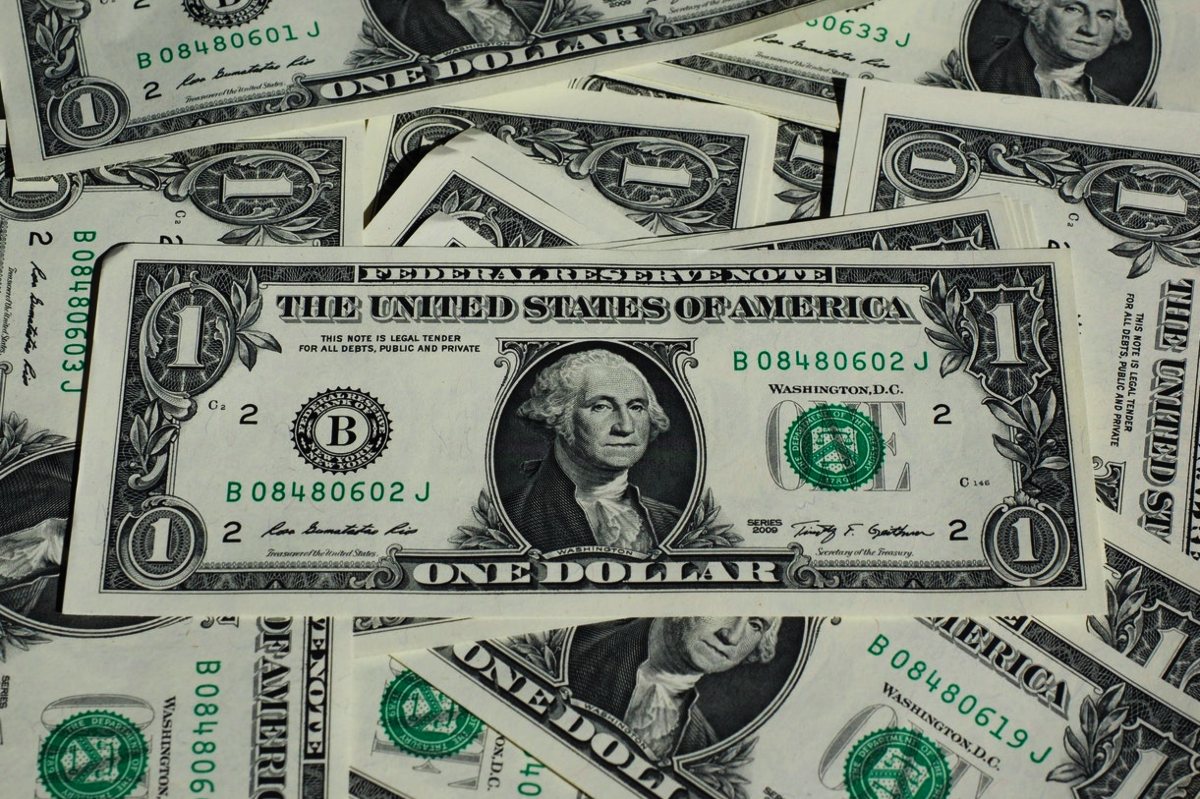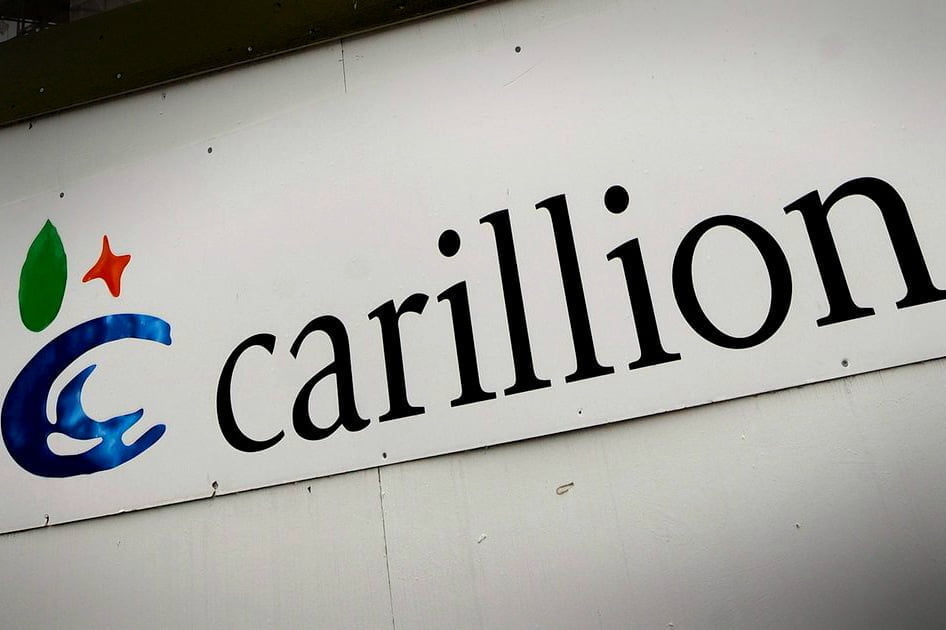A new book by journalist Bob Wylie explores the murky dealings and shady accounting practices that led to the collapse of Carillion in 2018. Under capitalism, such parasitic Ponzi schemes are not the exception, but the rule.
The overnight collapse of construction and outsourcing giant Carillion in 2018 sent shockwaves across British industry and the City of London. How could a firm this big just go under without warning?
As a result, huge construction projects were suddenly left in limbo with thousands of workers facing an uncertain future.
Now journalist Bob Wylie has written the first full account of this fiasco. At the same time, the author raises serious questions about how it all came to pass. His book Bandit Capitalism is, as we shall see, well titled.
Living a lie
At heart, Carillion was living a lie: paying out huge salaries to senior managers and massive dividend handouts to shareholders each year, whilst actual earnings were plummeting.
During the period of 2009-16, £554 million was paid out in dividends by the board; yet income during the same period was only £594 million, of which only £159 million was actually cash earnings from real operations.
“These figures don’t account for the looting of Carillion by its executives,” notes Wylie in passing. For example, over this same period, CEO Richard Howson somehow pocketed £7.2 million in salaries, pensions, and perks. He was not alone in filling his boots.
Carillion CEO Richard Howson earned £1.5m in 2016 (incl £591k in bonuses). He’ll continue to receive his £660k salary until Oct 2018, despite collapse. The Institute of Directors call this sort of behaviour “highly inappropriate.” Or daylight robbery, as it’s known to most people pic.twitter.com/o1MS2isbnp
— Laura Pidcock (@LauraPidcock) January 17, 2018
In 2017, the former finance director of the company Richard Adam flogged off bonus shares in the company that netted him £776,000, having told everybody at the start of the year that the firm’s finances were “healthy”. By the start of the next year, Carillion had just £29 million in its own accounts. Meanwhile, it owed £1.3 billion to the banks, alongside a hole in the pension fund amounting to £2.6 billion.
Of course, none of the senior executives had to worry about the company pension fund – they had separate watertight pension arrangements that were always topped up and more. In fact, between them, the company’s directors were able to loot over £46 million during Carillion’s history.
Cooking the books
 The Carillion scandal, as the book explains, draws attention to the strange world of company accounting within big business.
The Carillion scandal, as the book explains, draws attention to the strange world of company accounting within big business.
This includes the presence of something called ‘goodwill’ in company accounts. This is no small matter. Over half of the top 500 firms in the UK and US have at least one third of their book equity represented by goodwill valuations.
Goodwill represents, according to the FT, the difference between the price paid for a company acquisition and the actual value of the assets acquired. The trouble is that the goodwill estimations are just that – estimates. In Carillion’s case, the company auditors seemed strangely happy to let these valuations increasingly depart from reality.
Then you come to something called ‘negative accruals’. These are debts owed to the company. But for accounting purposes, one can treat these as assets, even though you do not have – and may never have – the actual money.
Carillion had a lot of negative accruals, many of which looked set to remain negative, Like the use of goodwill valuations, however, this made the accounts look much healthier than they really were.
These were just the two more blatant devices used by accountants to present a picture agreeable to those at the top. And they are still being used within big business today.
Even when Tesco were caught overstating profits by £250 million in what the Serious Fraud Squad called ‘false accounting on an industrial scale’, Carillion just carried on telling what one manager called “one version of the truth”. One version of the lie, more like it.
Ponzi scheme
Bon Wylie refers to Carillion’s operations as one big Ponzi scheme. New contracts were acquired at rock-bottom prices to pay for the mounting debts incurred by the under-performing old ones.
Concerns were raised as debts caught up with the income – or rather, the lack of it. But the attitude of the board was simple: we must pay the dividends to the shareholders as normal. In regards to reducing the now huge debt mountain, the line according to one board member was that “this is not the right time”.
Instead, in 2017, the board signed off on a £55 million dividend payout, with more promised. They also set to work paying themselves huge salary increases and nice fat bonus payments, payable come what may, and most definitely not recoverable in the face of any disaster.
Millions of pounds were quickly put in the hands of the top managers, at the same time as the company was staring at total collapse.
Indeed, Wylie’s book points the finger squarely not only at Carillion’s senior executives, but also at the firm’s auditors. These ladies and gentlemen must either have been complicit, or they were very bad at their jobs, allowing a rosy picture to be presented – and nice fat bonuses to be paid out.
Nevertheless, the writing was on the wall. Reality could not stay hidden forever. City spivs were starting to get wind of the real picture. By the summer of 2017, short-selling of Carillion shares – i.e. bets by investors on things getting worse – accounted for nearly 30% of the total stock.
Despite later claims by management that the collapse in Carillion’s earnings was sudden and totally unexpected, the book shows that this had been coming for years. The writing was on the wall for some time, but was hidden by the sort of ‘creative accountancy’ that only big business and the Mafia seem able to get away with.
The reality was that there was now a £845 million hole in accounts, and this could no longer be avoided. Yet this is precisely what Carillion did. The trading figures for the year ending September 2018 showed a mysterious surge in profits of £365 million – with bonuses all round, of course. Yet major contracts were collapsing all around them.
Crony capitalism
 Naturally the board turned to the state for a helping hand. Despite all the Thatcherite rhetoric about “standing on your own two feet” and cutting state expenditure, large companies have for decades been feeding off government finance in one way or another.
Naturally the board turned to the state for a helping hand. Despite all the Thatcherite rhetoric about “standing on your own two feet” and cutting state expenditure, large companies have for decades been feeding off government finance in one way or another.
The construction industry has always been very reliant on this, with large public-sector projects keeping many firms above the waterline. But Carillion had also signed up for the gravy train that was outsourcing – first via PFI, and then PPI – and now had fingers in every pie.
The board firmly believed that the government – especially a Tory one – would consider Carillion to be “too big to fail” and would come to the rescue.
The board therefore placed all its hopes in its strong links to the Tories, as well as to Blairite relics such as Sally (now Baroness) Morgan, who joined the board in 2017. Morgan picked up £30,000 for six-months ‘work’, on top of the fees she pocketed from other companies, amounting to around £250,000 in total for the year.
At first, therefore, Carillion’s bosses had good reason to be confident of establishment support.
Indeed, the closed world of the establishment elite had become so cosy that even the Economist journal (in December 2018) felt moved to say that: “Britain is governed by a self-involved clique that rewards group membership above competence…thus meritocracy morphs into crony capitalism.”
Carillion, along with many other big firms, enjoyed a close relationship with ministers and senior civil servants. Prying eyes and tricky questions from backbenchers and journalists were either shrugged off or sidelined.
As 2017 drew to an end, however, it was becoming more than a little apparent that the government was not going to bail out Carillion this time. They had their own self-interest to protect. Phone calls started to be ignored and meetings avoided.
The banks presented a deadline, demanding that the board either get a lifeline from the government, or prepare to go bust and let the vultures grab what they can. Naturally the first aim of the board when writing to the Cabinet Office was to ask for immunity from prosecution!
By January 2018, time was up. The board’s business plan could not be sold to the government: the figures just did not add up. Accordingly, on Friday 12 January, the board had one more task in hand – to pay out £6.4 million in fees to their accountants, advisers, and other City chums.
Subcontractors, workers, and public sector clients would not be so lucky, as Carillion went into liquidation the following Monday. As the House of Commons report on Carillion later put it: “The mystery is not that it collapsed, but that it lasted so long.”
Exception or rule?
In the aftermath of the company’s collapse, a recognisable line from the Carillion executives started to be presented. They went from saying “Nothing is wrong – the company is robust” to “What happened? Who could have predicted this?” to “We are all very sorry – but not so sorry to pay back any of the money we looted”.
The establishment then added its own coda: “This is a one-off, and lessons will be learnt”.
Yet no lessons have been learnt – except by the bosses on how best to avoid any blame in the future. And this was certainly not a one-off; this was not some sort of wild exception. Carillion was not the first such collapse. And, as we would see with the likes of Interserve just over a year later, it would not be the last.
Carrilion does not represent the exception, but the norm. This was the real ugly face of capitalism – a system of profiteering and plunder.
Carillion was ‘unlucky’ in that they allowed hubris to blind them to the limits of what they could get away with in terms of pillaging the company for themselves and their shareholder chums, without actually making any money to cover it.
The last part of the book draws this out, linking Carillion to the whole rotten edifice that is the City of London, the government, and the bankers and auditors who always seem to profit at our expense.
Yet here we also see the main failing of the book: a vain and naive hope that everything will somehow change within the current system and setup.
But capitalism cannot be reformed or regulated. The capitalists will never be made to stick to the straight and narrow. The whole decrepit system needs to be swept away.
We must end the swindle of privatisation and outsourcing, and nationalise the banks and major monopolies that are the top of this parasitic pyramid scheme. Only by taking the key levers of the economy out of private hands – and into public ownership and democratic workers’ control – can we put an end to capitalism’s endemic corruption and cronyism.






